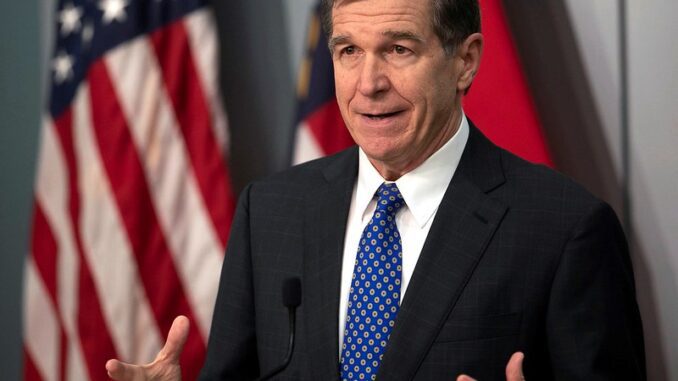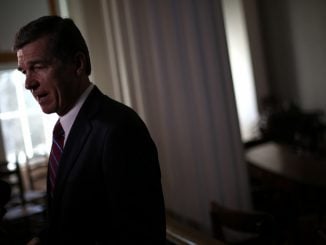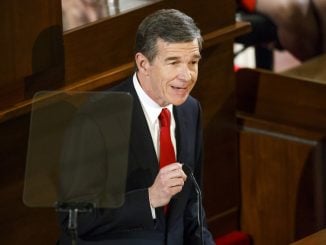
RALEIGH – Gov. Roy Cooper issued a new executive order on Wednesday backing offshore wind energy and setting targets for the state’s development of new projects.
According the order, the state will strive for development of 2.8 gigawatts of offshore wind energy resources off the coast by 2030 and that targets increases to 8.0 GW by 2040.
Additionally, the order creates two new positions for clean energy economic development and offshore wind military affairs in addition to a task force foe wind economic resource strategies.
“Offshore wind power will help North Carolina create jobs and generate economic development while helping us transition to a clean energy economy,” said Gov. Cooper. “North Carolina’s national leadership in clean energy and manufacturing plus our highly trained workforce create a strong business environment for offshore wind supply chain and manufacturing companies.
This is not the first time Cooper has created a commission in an effort to circumvent the statutory Energy Policy Council, which is led by the state’s Lt. Gov. Before the “wind commission” Cooper created a Climate Change Interagency Council so that he could amplify his message through a group of his appointees.
Just last week, following the N.C. Senate’s decision not to confirm Dionne Delli-Gatti as the state’s N.C. Department of Environmental Quality secretary, he named her “North Carolina Clean Energy director” to continue her work to lead the state’s transition to clean energy.
Bloomberg News reported that the offshore wind plans mirror a push by President Joe Biden.
The entire U.S. currently only has two commercial wind farms with a total capacity of 42 megawatts, with Biden setting a goal of 30 GW by 2030 and later approving the first offshore wind farm in the U.S. in May.
Energy policy experts including former Representative Chris Millis are not convinced of Cooper’s position.
“I am concerned by Cooper’s action to promote on the backs of our ratepayers a form of energy production that is unproven, unreliable, and very expensive. Cooper is blocking North Carolina’s access to affordable, clean natural gas, but is willing to risk our economic well-being by promoting hundreds of wind turbines. The irony of his position is that wind turbines need the redundancy of a shadow grid backed up by natural gas to work,” said Millis. “I am also surprised that Cooper’s order doesn’t mention North Carolina’s tourism industry. Hundreds of turbines off the shore of the Outer Banks and Wilmington will spoil our pristine coastline.”
Millis, an engineer and former N.C. House Rep., authored The Ratepayer Protection Act during his tenure in the legislature.
Duke Energy, the state’s largest energy utility company, weighed in the announcement.
“We are committed to a clean, reliable energy transition for the Carolinas which will require a diverse energy mix, including renewable resources, as well as thoughtful analysis and planning to ensure continued reliability for customers. We will continue to collaborate with policymakers to evaluate and advance solutions that yield a balanced energy portfolio and promote the region’s economic growth,” said Grace Rountree, a spokesperson for the company.
Today’s order appears to be the next step in a push led by regional governors to create a hub for offshore wind energy and industry.
An October 2020 memorandum of understanding between Cooper, Maryland Gov. Larry Hogan, and Virginia Gov. Ralph Northam created a framework for the three states to cooperatively promote, develop, and expand offshore wind energy.
“Offshore wind development combined with our strong solar capacity will bring more high paying, clean energy jobs to North Carolina while we continue to ramp up our fight against climate change,” said Cooper at the time.
An area around Kitty Hawk has already been identified for development by Avangrid Renewables and reviewed by the U.S. Bureau of Ocean Energy Management (BOEM) and the project developer, Avangrid Renewables including environmental studies and public engagement processes.
The Wind Energy Area (WEA) is 200 square miles, according to the project backer, and claims it would minimize impacts to other users of the Atlantic Ocean.
The order expires on Dec. 24, 2024, Cooper’s last day in office.
The full EO can be read here.



